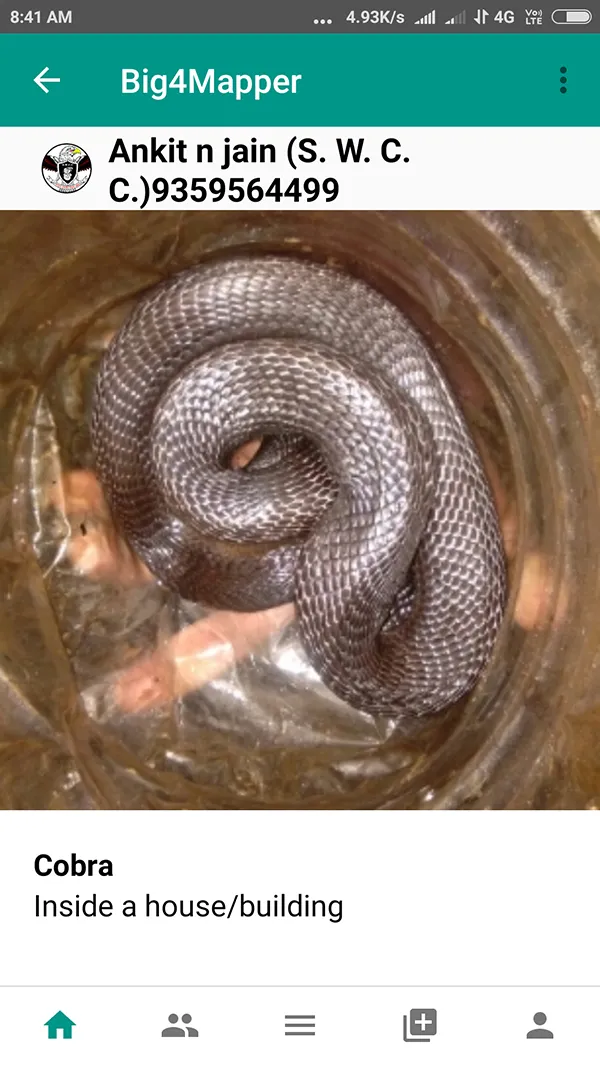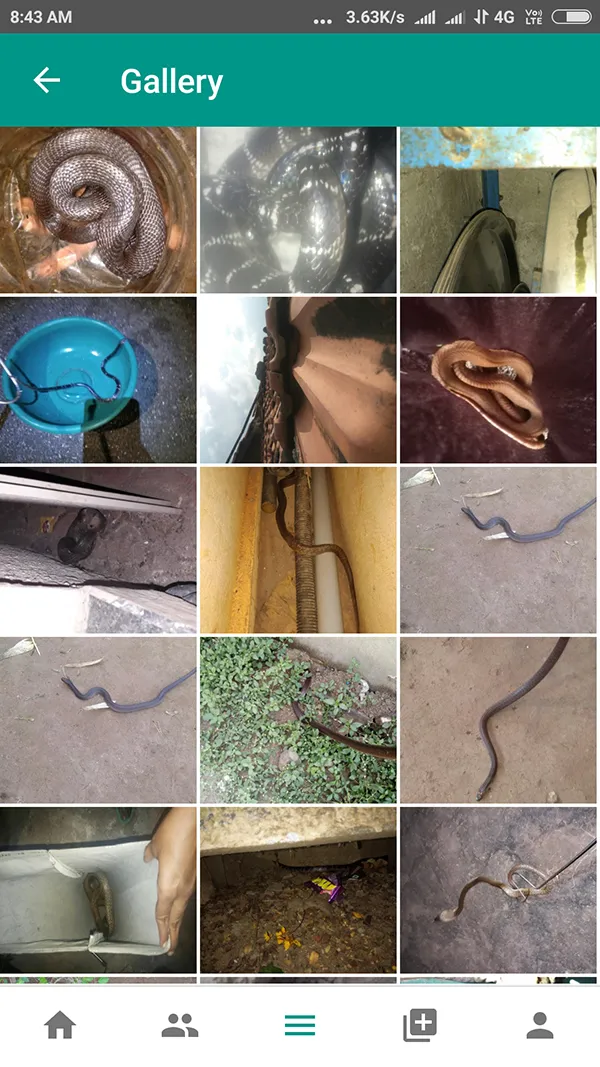This App Is Saving Thousands of Snakes (and Humans) in India
The Big Four Mapping Project’s conservation tool helps prevent snakebites and the killing of common venomous species
/https://tf-cmsv2-smithsonianmag-media.s3.amazonaws.com/filer/5c/38/5c385376-5e5f-4ad7-85c4-47d350806a26/russells_viper.jpg)
Growing up in the lush, green farmlands of the south Indian town of Kottayam, in the state of Kerala, Jose Louies was surrounded by plenty of wildlife. While other eight-year-old kids played with cats and dogs, Louies brought home small, harmless snakes and fed them rats.
Louies parents' detested his obsession for serpents, but it sowed the seeds for his spectacular career in wildlife conservation. He currently heads the wildlife crime control unit of the nonprofit Wildlife Trust of India. Now, he is spearheading a project for mapping out human-snake conflict in India—an effort that could potentially save many people from getting bitten by venomous snakes, and, consequently, prevent snakes from getting killed.
More than 270 species of snakes thrive in India's tropical monsoon climate, though only 60 of them are venomous. However, as most of India's population still lives in rural areas, encounters with snakes are quite frequent. Snakebite claims 46,000 people in the country every year—that number is just five in the United States. While antivenom is freely available in public hospitals, many of them don't update stocks, and doctors aren't often well-versed with the snakebite treatment protocol.
In the absence of a government snakebite mitigation initiative, Louies' effort, officially called the Big Four Mapping Project, is the largest campaign dedicated to mapping out snake vs. human encounters. "Big Four" refers to the four most common venomous snake species in India—spectacled cobra (Naja naja), saw-scaled viper (Echis carinatus), Russell's viper (Daboia russelii) and common krait (Bungarus caeruleus). While there are other venomous snake species, these four cause the majority of snakebite-related deaths in the country. The project is part of the Indian Snakebite Initiative, the country chapter of the Global Snakebite Initiative, a nonprofit dedicating to reducing snakebites—will eventually map out other deadly species as well.
Two main elements drive the project: an android app and a network of more than 1,200 volunteer snake rescuers across the country.
Here's how it works: when a person spots a snake in his vicinity (say, his house), he can call up a rescuer available in his area. The contact information for snake rescuers is listed on IndianSnakes.org, an educational website run by Louies (it's also part of the Indian Snakebite Initiative). In urban areas, a rescuer generally gets to the location within 10 to 15 minutes. First off, the rescuer will take a picture of the snake within the Big4 Mapper app, available free for download on Google Play. They discover snakes in all types of unthinkable locations—snuggled up inside a pressure cooker or quietly sleeping inside a closet. Other app users, those who first spot the snakes, can also upload photos. The images trickle into the Big4 Mapper servers that Louies oversees. The app also pulls up the GPS location of the house. The rescuer then bags the snake using a hook and releases it into the wild, before logging important details, including the species of the snake and the condition of the house where it was found.

Since the project was started in early 2017, the app has had upwards of 10,000 downloads, and more than 5,000 snake-human conflicts have been entered into the system—proof snakes are very commonly found in Indian households. That's why mapping out snakes is crucial to preventing snakebites. "We are talking about snakes killing people. But we don't know much about the distribution patterns of snakes in the country," Louies says.
Already, the project has revealed some important findings. "We've understood that 70 percent of encounters in the houses are with cobras," Louies adds. "We had an inkling that this might be the case, but this is the first time it has been scientifically proven." Moreover, they found that kraits tend to be more active after dark. “These kinds of tidbits can be useful for doctors when they receive patients at night,” he says.
These insights become possible because of Louies' handpicked rescuers. Even though they are trained in snake handling protocol and have years of experience rescuing snakes, their job is full of pitfalls.
"When someone sees a bird perched on their windowsill, they don't give it a second thought. But when someone finds a snake in their backyard, their entire family or even neighborhood goes into a state of frenzy," says Louies.
Subhadra Cherukuri, a consultant with Ernst and Young, has been voluntarily rescuing snakes in and around Bangalore in the southern Indian state of Karnataka for seven years. In one instance, she had to brave a crowd of more than 40 people that had thronged to watch the snake-rescuing spectacle.
"The crowd can get rather unruly,” she says. “They want to take selfies. They want to rescue the snake themselves without training."
Rescuers also play a crucial role in educating the public. "I start engaging with people right after I pick up a snake rescue," says Cherukuri. "There's no point of doing a rescue without engaging with people. Otherwise, they won't know what to do and what not to." There is a tendency to kill the snake in order to avoid getting bitten. Cherukuri calms down the people in the snake's vicinity, and also gives first aid instructions if someone gets bitten. Louies says this is helping snake conservation, as rescuers can convince people to not kill the animals.

Bangalore-based Krishna Chaitanya, a herpetologist who is not associated with the Big Four Mapping Project, says a project of this type and magnitude was "long overdue" in the country.
He says that the government could use this data to distribute antivenom in the future. However, he adds, the data needs to be free of biases. "If I look at the maps today, the data points are heavily skewed towards the Western Coast of India, starting from Gujarat up to central Karnataka," says Chaitanya. "The East Coast lacks sufficient data points." Perhaps, there aren't enough snake rescuers in that part of the country, he speculates.
Louies agrees. He is trying to recruit more rescuers, he says, but given India’s size, it may be a while before there’s more activity on the East Coast side of the Big Four map. Ideally, he would like to have one rescuer per 50 square kilometers.
To take the app's utility to the next level, Louies is now working on its second version that will be released in December. Users would be able to tap into the GPS feature to locate the nearest rescuer. They could also chat with the rescuer on duty before she arrives through the app's messaging feature. Louies also plans to map out hospitals with antivenom stocks on the app. Moreover, the app will be spruced up with educational information on the types of snakes in the local languages of India and English.
The new-and-improved app would make snake rescue very systematic and accessible, Louies explains. "It will be like calling Uber," he quips.